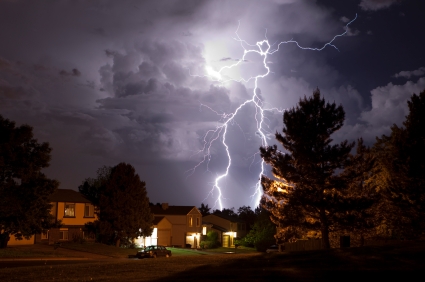
The Property Casualty Insurers Association of America (PCI) continues to provide simple steps home and business owners can take to prepare for hurricane and the summer storm season by issuing the fourth brochure of its “Six Steps To Storm Safety In Six Weeks” series.
The third brochure, “Three Ways In Three Days,” provides three simple and effective storm-proofing techniques that can easily be done in a weekend. They include:
· Taking a walk around one’s yard and picking up or securing any items that could become wind-borne debris
· Trimming the trees near one’s house or business to minimize the risk of a large branch falling on the roof
· Using a caulk gun to properly adhere trusses to the roof decking
“PCI feels that it’s important to share safety tips with home and business owners as the start of hurricane season is rapidly approaching on June 1. Many of these storm-proofing techniques will also benefit home and business owners living in geographic areas susceptible to severe thunderstorms and tornadoes over the spring and summer months,” said Chris Hackett, PCI’s director of personal lines policy in a press release. “Regardless of whether you live along the Gulf coast or in the Midwest, you can reduce the possibility of damage to your home or business during a severe weather event.”
This guide can be found online at: “Three Ways In Three Days.”
PCI will issue ideas for home and business owners on how to mitigate their storm risks each week between now and the start of hurricane season in June to save on homeowners insurance and commercial insurance costs. Some of the topics include mitigation techniques and ideas, do-it-yourself inspections, a guide to insurance coverage and basic steps to take before and after a storm.
“While we certainly recommend hiring a licensed contractor to assess your structural needs heading into hurricane season, there are simple steps home and business owners can take that make a big difference,” Hackett adds. “Something as simple as picking up or securing items such as swing sets, outdoor play toys, barbecue grills and trash cans will reduce the number of projectiles that could damage your home in a serious storm.”
The first guide, “The Seven Ways To Safety,” discusses the seven most important features that home and business owners should inspect to ensure that their structures are wind-resistant. These include roof-deck attachment, secondary water barrier, roof covering, gable end bracing, foundation-wall-roof connections, opening protection and garage doors. This first brochure can be found on the Web at: “The Seven Ways To Safety.”
The second guide, “A Do-It-Yourself Wind Inspection,” provides detailed information on the three key steps involved: inspecting roof shape, inspecting roofing, and inspecting windows, doors and garage doors. It can be found online at: “A Do-It-Yourself Wind Inspection.”
The third guide, “Insurance Coverage,” helps home and business owners by defining key terms such as deductibles, actual cash value, replacement cost coverage, functional replacement cost and also reiterating that flood damages are not covered under standard homeowners policies. It can be found online at: “Insurance Coverage.”












